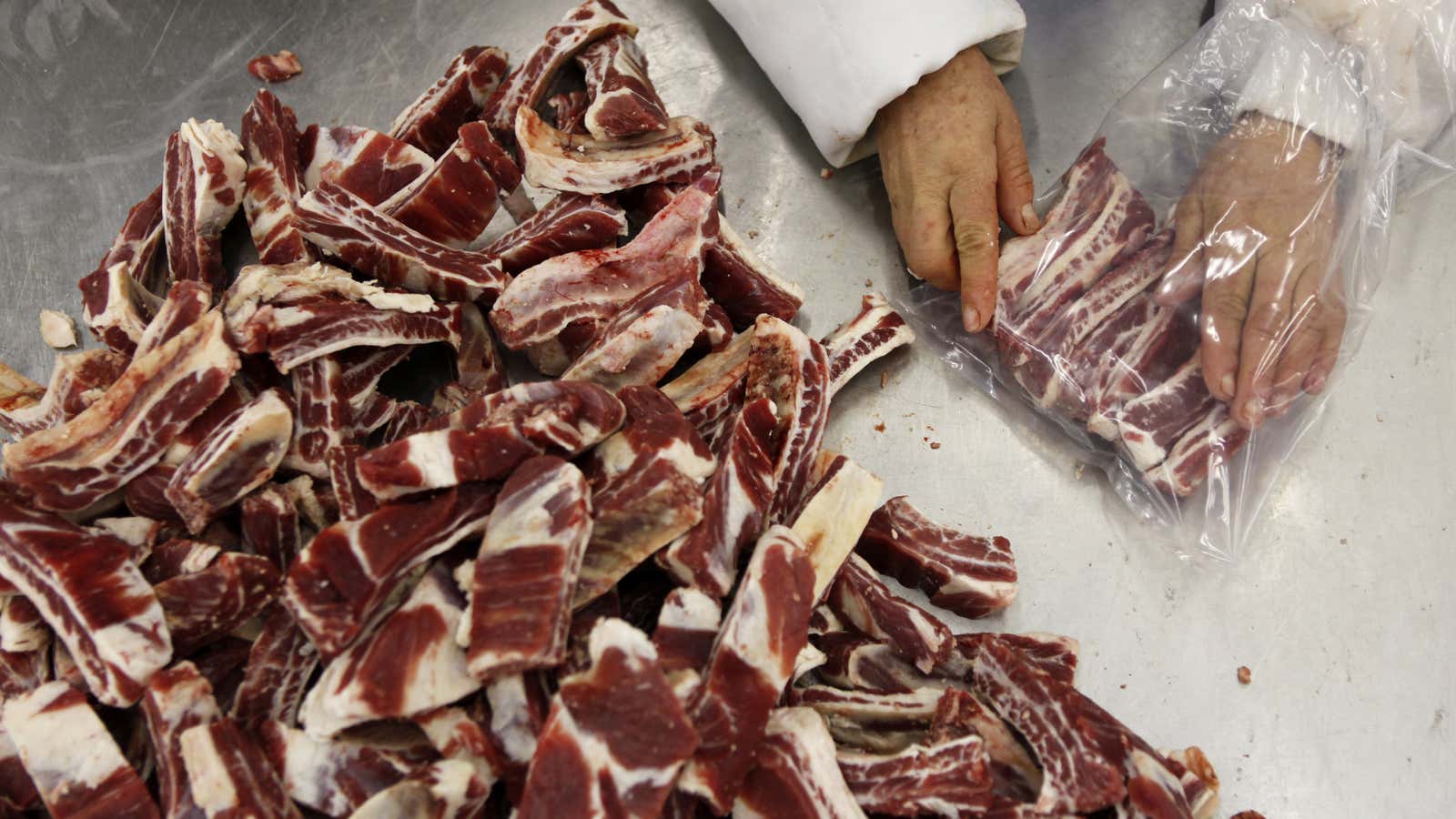In the echo chambers of social media sites such as Twitter and Facebook, the reputation of the American meat industry is eroding.
That’s what speakers at the World Meat Congress in Uruguay said this week when bemoaning the industry’s uphill battle to maintain consumer trust. Companies are facing relentless critique from multiple angles—at this point, the meat industry is seen as a threat to the environment, animal welfare, food safety, and human health, including driving increasing antibiotic resistance.
“Social media is seen as the industry’s worst nightmare,” said Ted Bilyea, an agribusiness consultant, according to Global Meat News. The concern is straightforward: information travels across social media faster than the industry can react, making it difficult to assuage consumers’ fears about their meat products. Take these two tweets about Tyson Foods, for example:
Tyson rarely responds to claims hurled at them on social media, let alone with detailed retorts that could counter the narratives created by animal rights advocates and other groups. The company has carved out a space on its website to walk consumers through husbandry, environmental, and food safety practices, but it’s not driving conversation in social media.
To keep from being seen as a social big bad wolf, meat companies often seek advice from consultants, such as Bilyea, who champion the importance of building a relationship with a consumer base increasingly seeking transparency and knowledge about the sourcing of their food. That goal has only grown in importance as the animal welfare movement has morphed over the last two decades from a mostly-ignored loudmouth into a vigilant watchdog pulling off high-profile undercover investigations of farms.
Among other efforts, meat companies are now trying to give shoppers access to traceability tools that can track food from the shelf back to the farm. That’s become a multi-billion dollar industry, and can include on-package QR codes that direct consumers to source information—though whether Americans will fully embrace QR code technology remains to be seen.
